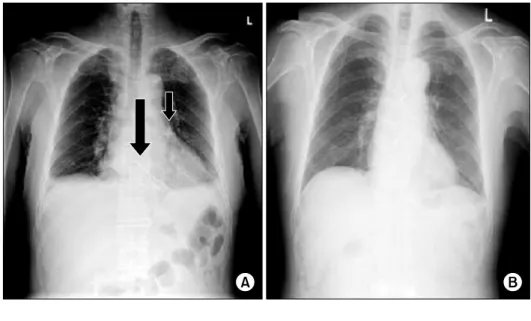Korean J Thorac Cardiovasc Surg 2013;46:72-75 □ Case Report □ http://dx.doi.org/10.5090/kjtcs.2013.46.1.72 ISSN: 2233-601X (Print) ISSN: 2093-6516 (Online)
− 72 −
1
Department of Thoracic and Cardiovascular Surgery, Gyeongsang National University School of Medicine,
2Institute of Health Science, Gyeongsang National University
Received: August 14, 2012, Revised: September 11, 2012, Accepted: September 13, 2012
Corresponding author: Jong Woo Kim, Department of Thoracic and Cardiovascular Surgery, Gyeongsang National University Hospital, Gyeongsang National University School of Medicine, 79 Gangnam-ro, Jinju 660-702, Korea
(Tel) 82-55-750-8124 (Fax) 82-55-750-8138 (E-mail) cs99kjw@hanmail.net
C
The Korean Society for Thoracic and Cardiovascular Surgery. 2013. All right reserved.
CC
